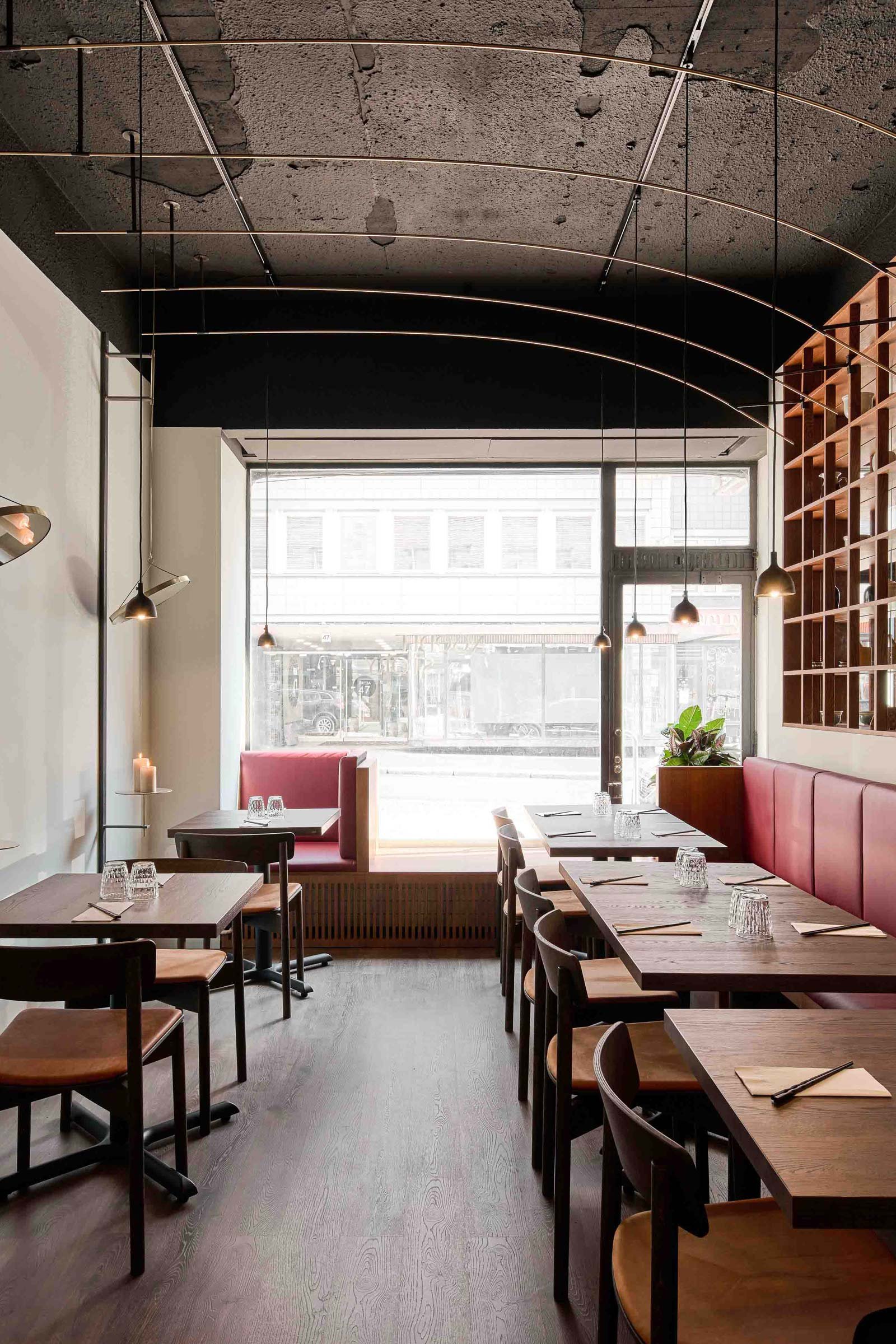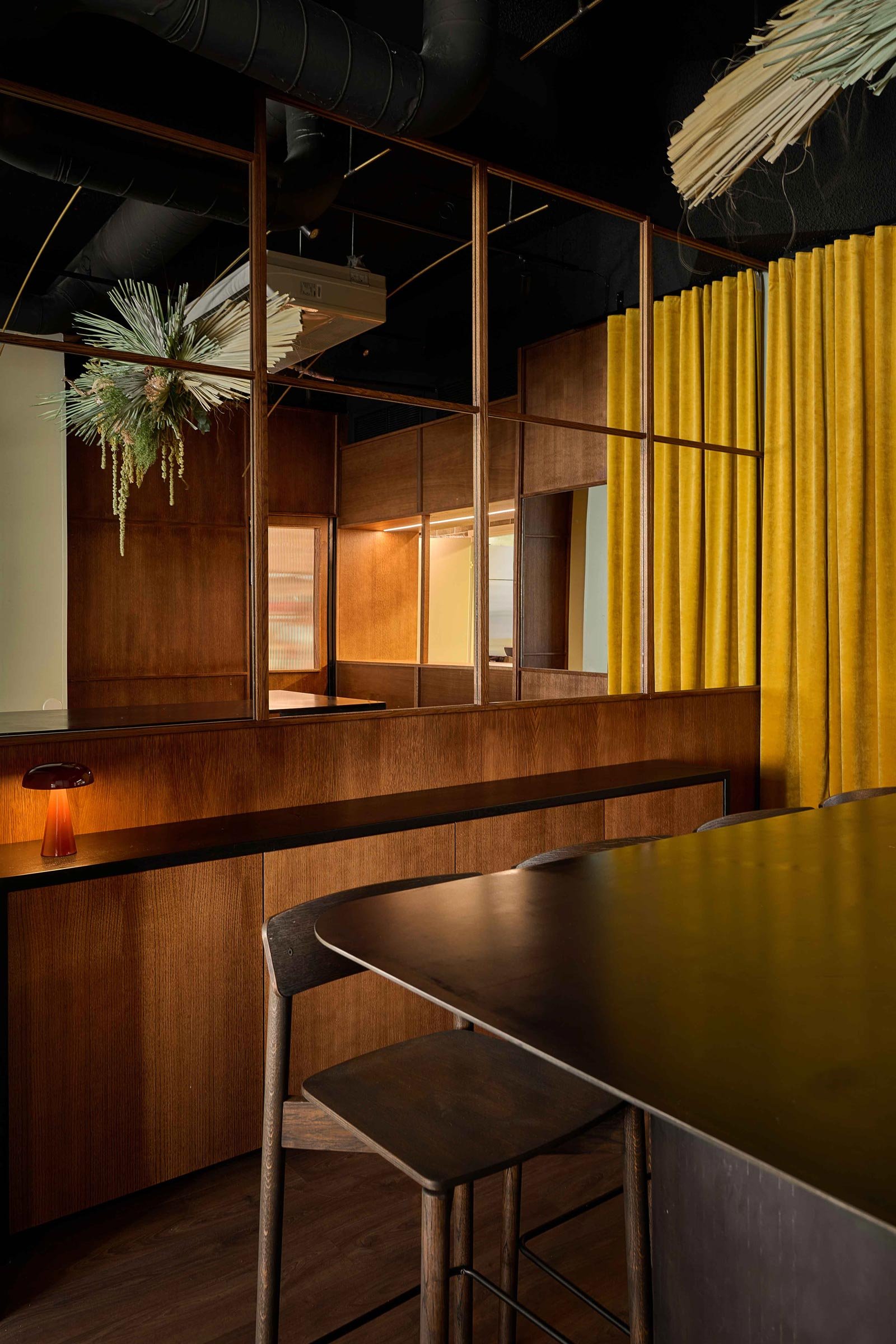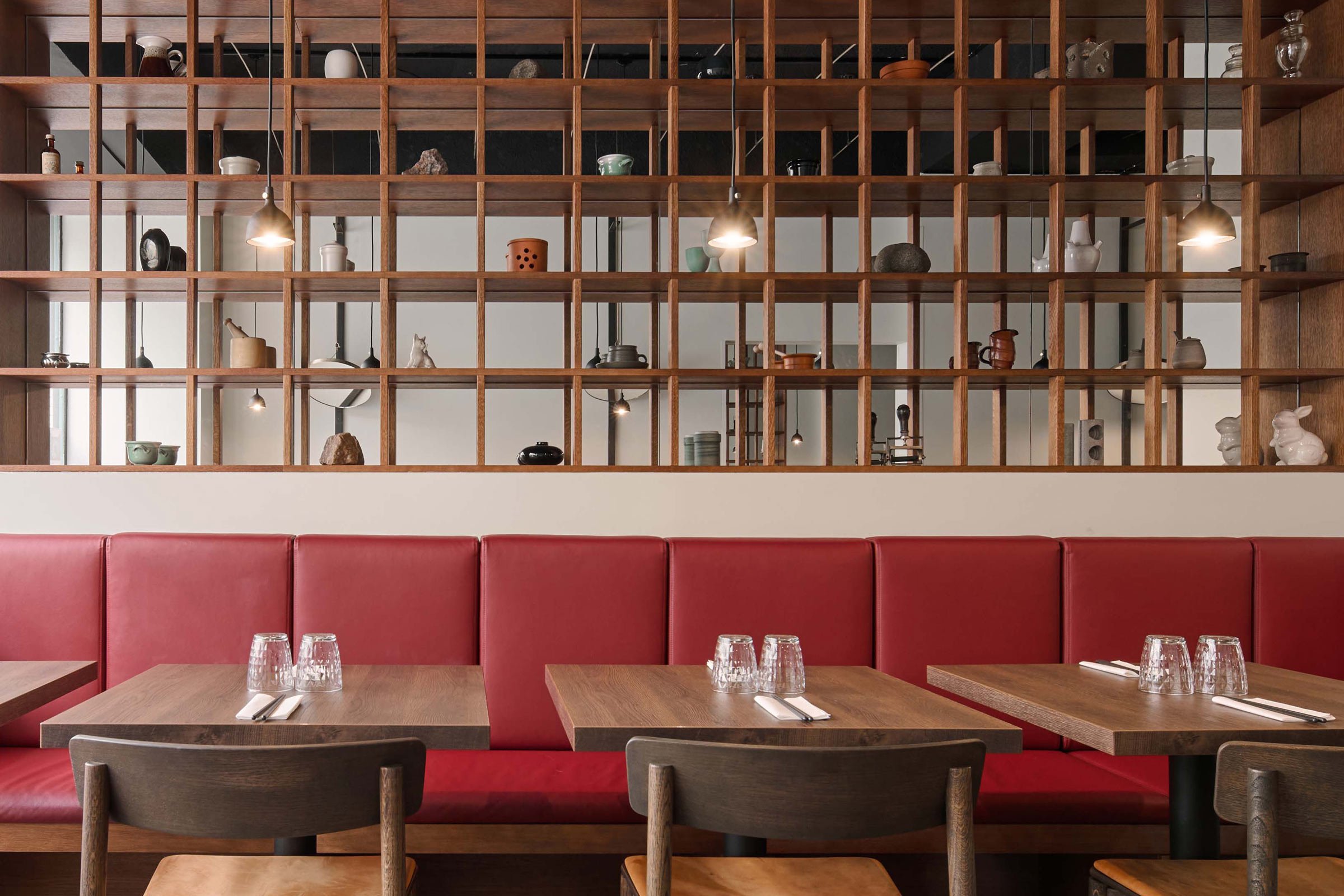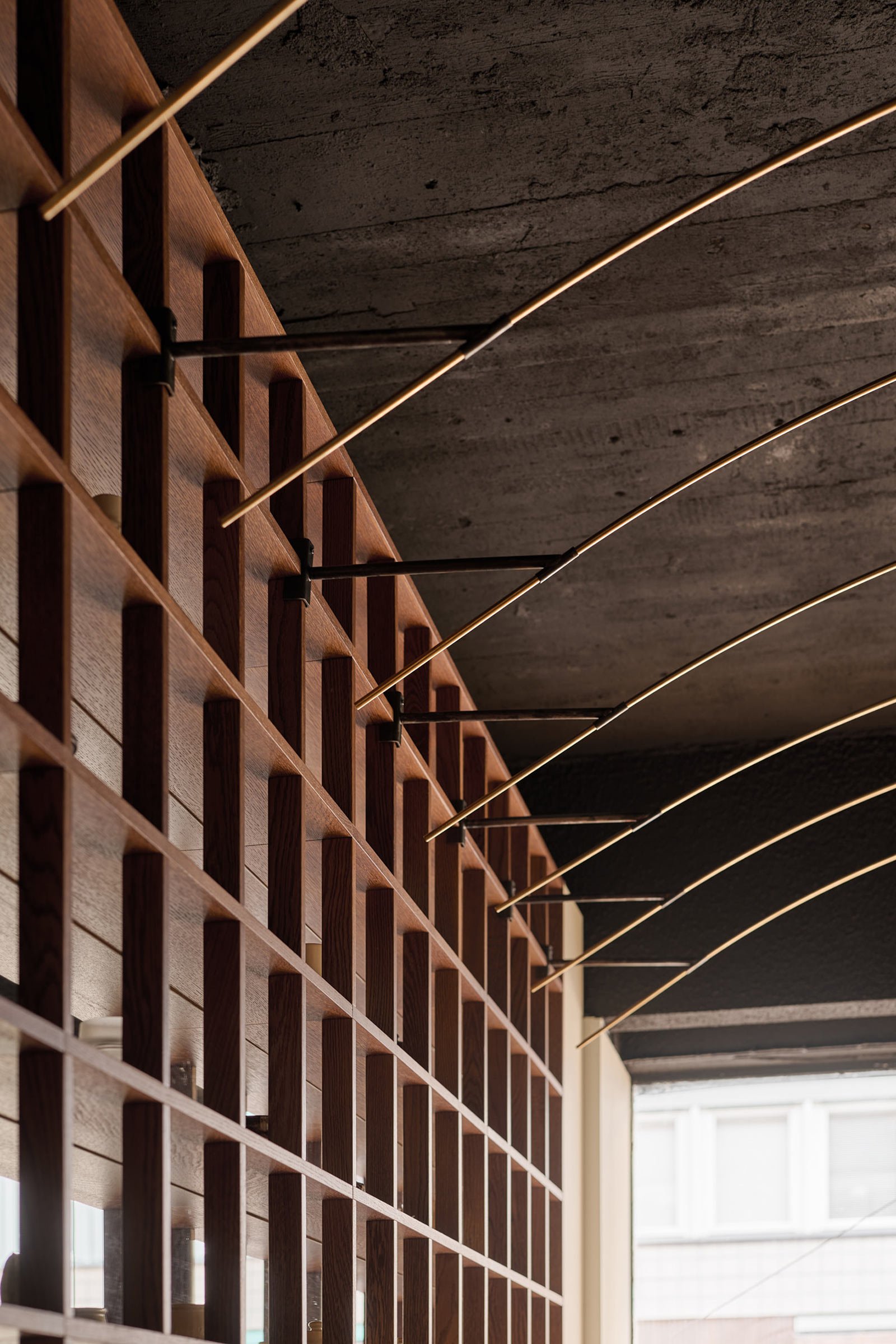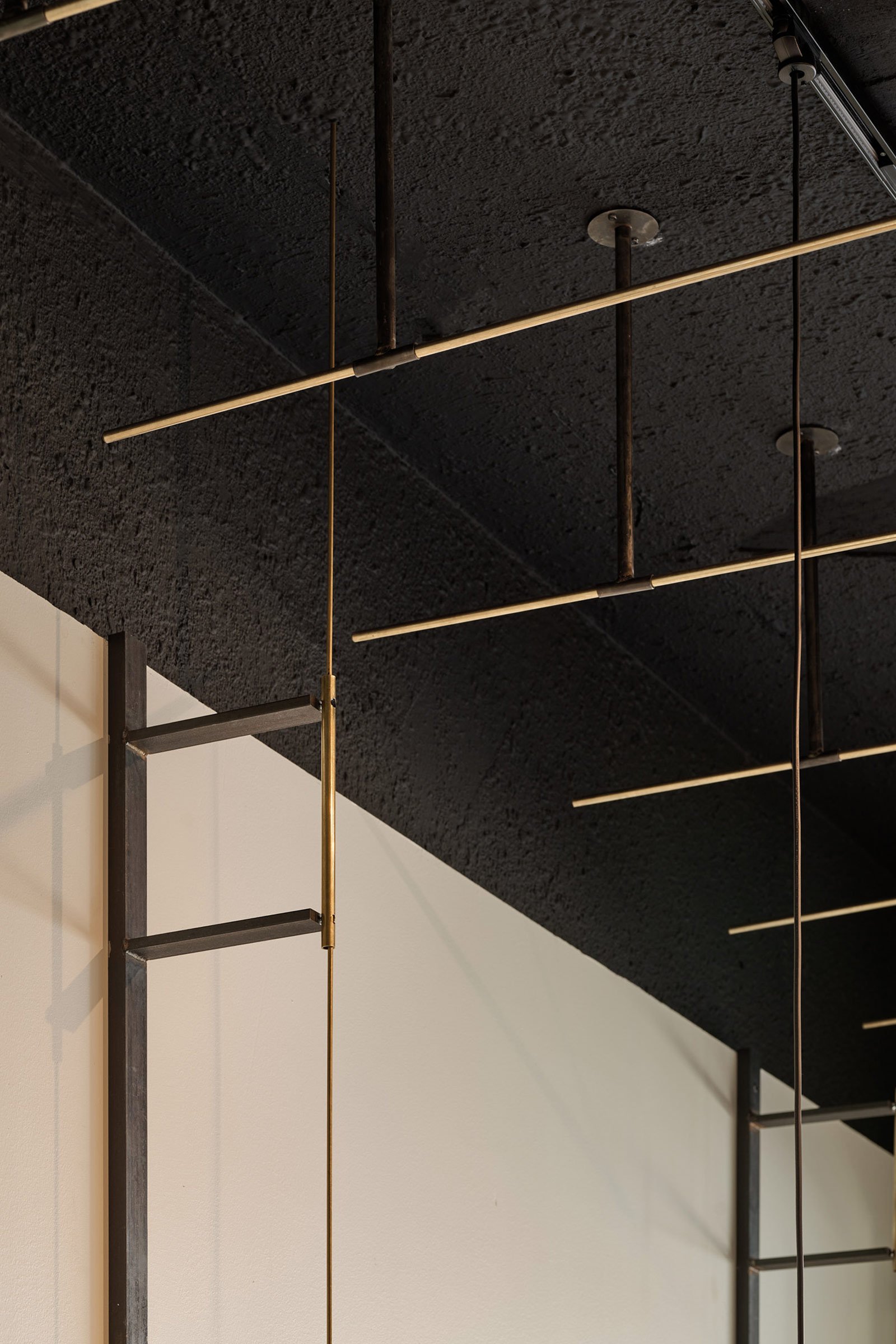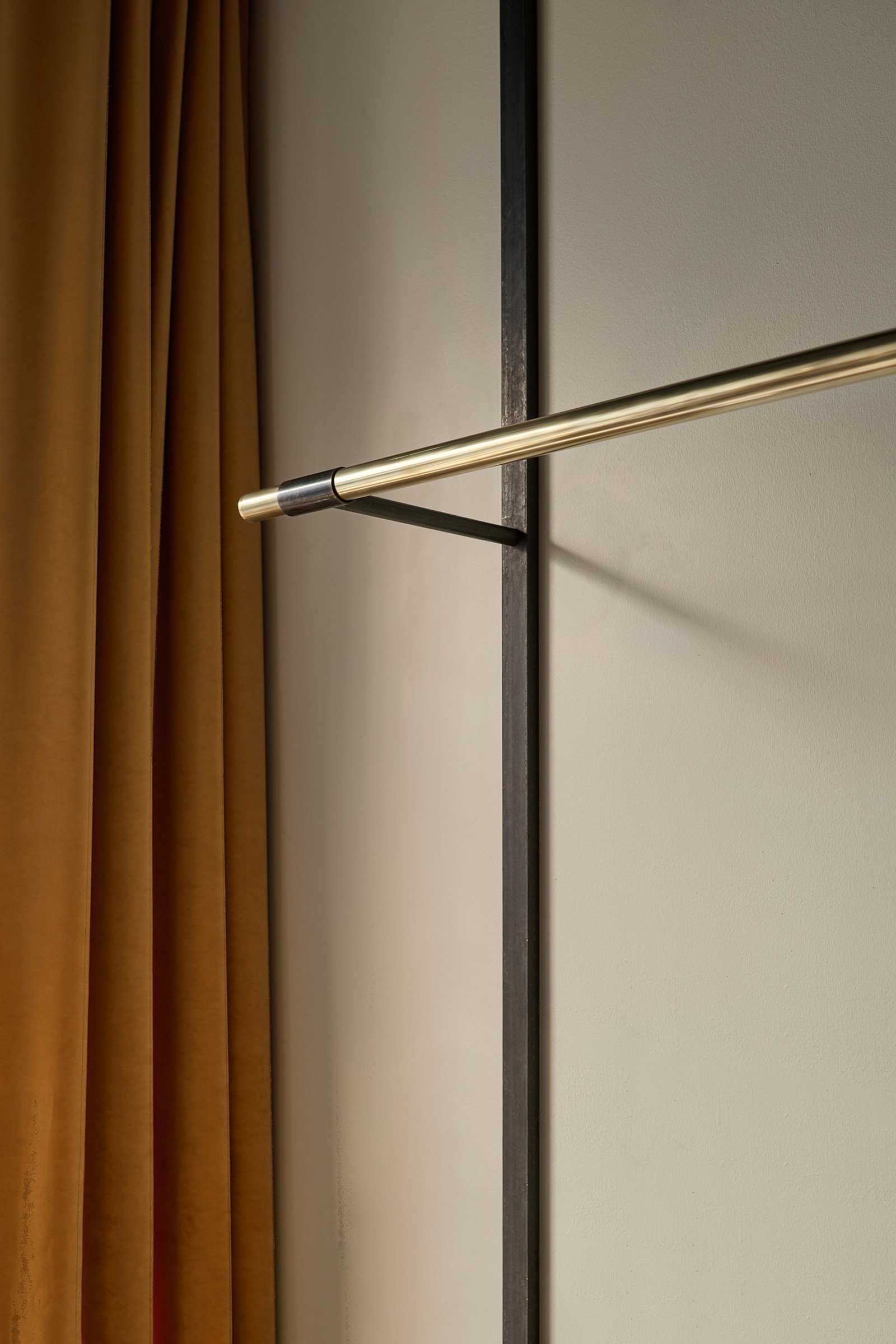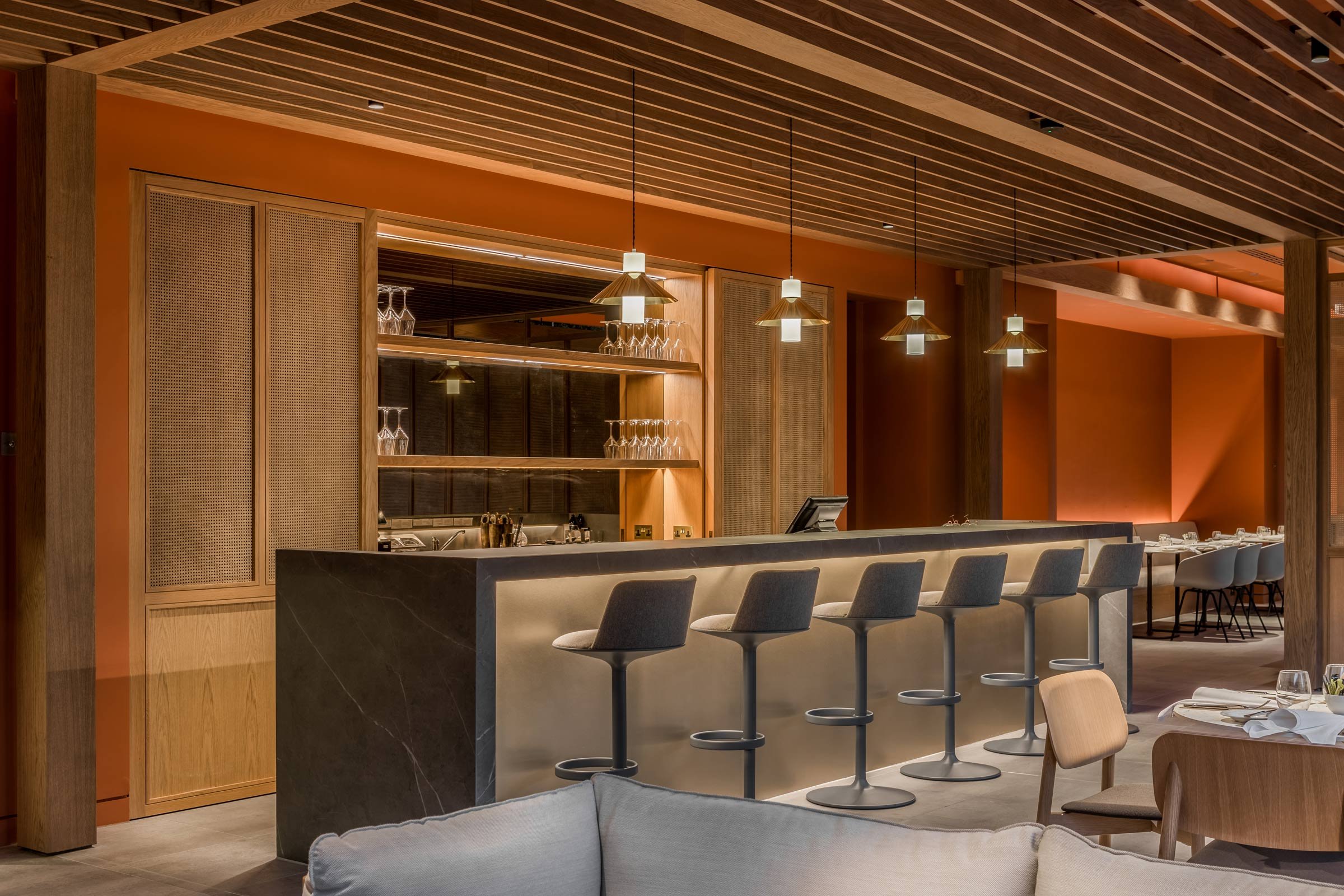Telling Stories Through Food
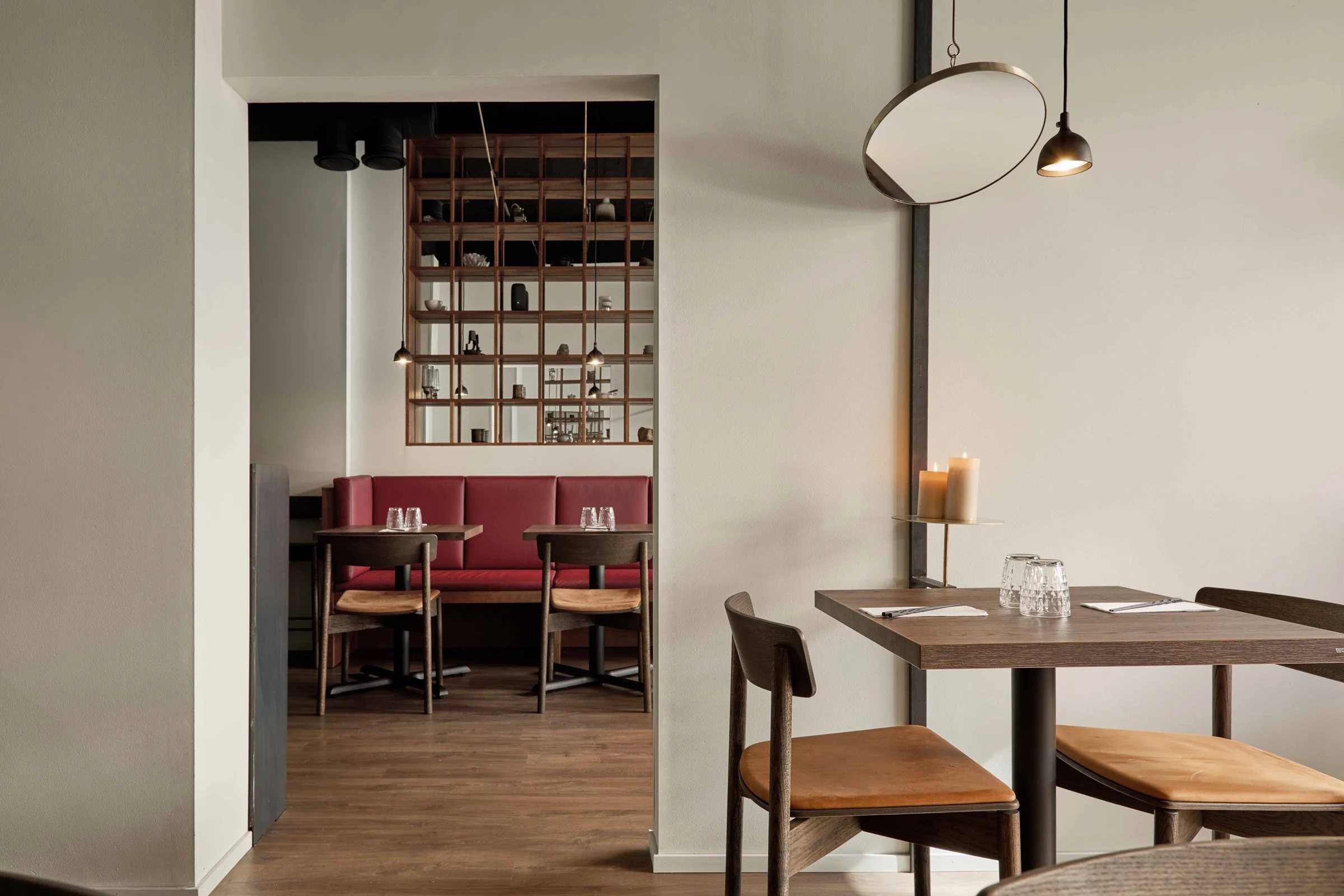
Yatofu Creatives designed Helsinki restaurant Noodle Story as a representation of authentic Chinese food culture in a space that is at once nostalgic and new
Inspiration can strike anywhere, anytime. In the case of Angela Lindahl and Yihan Xiang of Helsinki- and Shanghai-based Yatofu Creatives, they found inspiration for a recent project at a flea market. While researching for their third collaboration with Helsinki restaurant Noodle Story, the pair stumbled upon a Chinese curio cabinet. They were captivated by the object and its ability to transport them to another time and place, and equally intrigued by its ability to showcase multiple objects, from the unique to the prosaic.
Lindahl and Xiang first met as classmates at Finland’s prestigious Aalto University, where they were studying for master’s degrees in spatial and furniture design. Prior to their postgraduate studies, Xiang studied interior design at Tsinghua University in Beijing, while Lindahl studied industrial design at Pratt Institute in New York. The pair first collaborated as students and have continued to work together since, appreciating each other's perspectives while bonding over their cultural commonalities, passion for telling stories through design and their shared love of food (in fact, the name Yatofu comes from the first letter of each of their names combined with one of their favourite foods).
The designers’ long-term relationship with the client, who is equally passionate about her handmade noodles and dumplings, began with a humble meal. Xiang was a regular at the owner’s first restaurant, and it was when she learned he was a designer that their Noodle Story journey began. For the most recent location, in a hip neighbourhood in central Helsinki, both designers and owner felt it was time to create something quite different, symbolic of the brand’s evolution.
Xiang says that for this iteration, they wanted to use practical, ‘family friendly’ materials that don’t feel too precious and would patina gracefully over time. The result is a palette of dark smoked oak, faux leather and raw brass. The blackened concrete ceilings were left in their original state and mixed with a plaster, giving a raw industrial look that is deftly contrasted with a delicate brass structure that integrates overhead lighting, candelabras and suspended mirrors, a subtle but prominent feature that Xiang says is his favourite element of the space.
The mirrors, tilted at just the right angle, are an interesting and unusual element intended to facilitate guests' interaction with their meal and their fellow diners, in the hopes of luring them away from their phones. The curio cabinet concept comes into play via an open dividing wall — a simple tactic that helps open up the long narrow space — that the designers have filled with flea market bibelots, instilling atmosphere and an instant sense of nostalgia.
The designers explain that Chinese food culture is centred around the idea of bringing people together, and their intention was to aid that interaction in every way possible.
Text / Suzy Annetta
Images / Aleksi Tikkala


